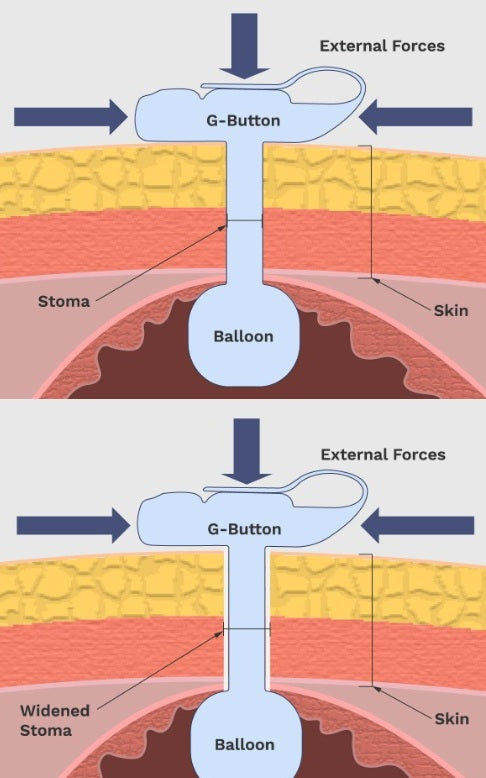Tips & Tricks for the Button Huggie

The Science Behind The Button Huggie
10 years ago, 50-60% of children who had creation of a gastrostomy underwent percutaneous endoscopically guided (PEG) gastrostomy placement. Nowadays, laparoscopic primary g-button placement has largely supplanted PEG placement, due to fewer major post-operative complications. Unfortunately, complications do still persist with the g-button placement, which include pain and discomfort, leakage, infection, granulation tissue formation, and accidental dislodgement. While the exact causes for the symptoms vary, it is theorized that lack of g-button stability is a primary factor. When a g-button is exposed to external forces (clothes catching, accidental hand-swipe etc.) and human-related forces (twisting of the abdomen, skin folding, coughing etc.), there is shearing between the g-button and the skin and the windening of the stoma. We believe that inhibiting the movement of the g-button, relative to the surrounding skin, will reduce the chances of accidental dislodgement and lessen stress on the stoma, so that the gastrostomy tract can heal faster, reducing the risk of post-operative complications.

I’m a NP but also have a gtube dependent toddler. I got the sample today and immediately put it on her. I love it! Wish i had it a year ago. No more tape, tegaderm, coban trying to keep her from yanking it out while on pump. Bravo!
- Brandie S.
Tips & Tricks

#EzaTip
Attaching the feeding tube once The Button Huggie is placed can always be tricky your first time attaching, make sure you’re pinching The Button Huggie so the feeding tube can secure properly!


